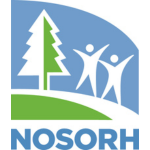by Beth Blevins
Through lay rescuer training and the distribution of lifesaving kits, Virginia is taking aim at opioid overdoses in the state. Now it is increasing its outreach into rural parts of the state through the Virginia State Office of Rural Health (VA SORH).
Between 1999 and 2013, the number of deaths from opioid overdoses in Virginia . “When we looked at the data we found that the opioid epidemic was hitting our bigger cities and our rural areas—especially in Appalachia (the southwestern part of the state) and the Shenandoah Valley,” said Michael Mallon, Assistant SORH Director at the VA SORH. In the Shenandoah Valley, the opioid epidemic is defined primarily by heroin and other illicit drugs, while in the Appalachia region, it’s prescription opioids, Mallon said.
The state’s project trains professionals and others (including family members of addicts) to recognize and respond to an opioid overdose with the administration of naloxone, a drug that can save lives if given in the first few minutes after an overdose. The lay rescuers who take the training also receive a kit that contains gloves and directions—but, until recently, no naloxone.
Mallon said that it has been difficult to provide naloxone both because its cost has in recent years (the cost of the injectable version has risen 600 percent), and because of existing state policy—prior to last November, obtaining it required a prescription from a physician. Since then, Mallon said, the Virginia Commissioner of Health has issued a statewide standing order declaring opioid overdoses a public health emergency, making it possible for anyone to go to a pharmacy to get it, with counseling on its use, from the pharmacist.
“But the cost issue hasn’t gone away,” Mallon said. So, he said, the VA SORH requested authorization to use its state funds for one year to buy naloxone for those who take its REVIVE! training. “We’re hoping we can use this as a catalyst to find someone else to fund it in the future,” he said.
Even with this temporary funding, there is still some difficulty in providing the drug from a logistic standpoint, Mallon said. “A lot of states are allowed to find funding, buy naloxone, and distribute it,” he said. “In Virginia, nonprofits cannot access it directly, but still must get it from a pharmacy, and only the pharmacies can distribute it.” Fortunately, Mallon said, REVIVE! has found a mail-order pharmacy that offers discounts to government agencies for the nasal spray version of naloxone, and it can ship the drug directly to those who have received the trainings.
After July 1st, the VA SORH and its partners will be able to dispense naloxone directly to the lay rescuers at the trainings themselves because the Virginia General Assembly has passed a law allowing coalitions and nonprofits to dispense it. “This will provide another access point,” Mallon said.
“This has been an important and developing issue to curb the effects of the opioid epidemic,” Mallon added. “It’s a matter of reviewing the framework of policies, trainings, and partners in your state and piecing together a plan to increase access.”
The VA SORH is planning to offer 10 REVIVE! trainings in rural areas this year. Each session will train up to 25 lay rescuers, Mallon said.
“We believe addiction is a chronic disease, and one that is treatable,” Mallon said. “We have to do more to expand treatment and, while we figure out the methods to do that, we owe it to our citizens to do as much as we can to prevent overdose deaths. Naloxone doesn’t cure addiction, but it prevents people from dying.”
